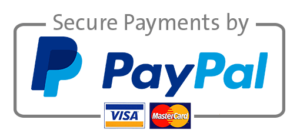Module B Response Paper In Module A, you saw how a historian uses a primary source (Columbus’s journal) to create an historical narrative. Now, let’s back up a bit and take a close look at primary sources. In this process, we will construct the context of the source. First, some definitions: In the study of history as an academic discipline, a primary source (also called an original source or evidence) is an artifact, document, diary, manuscript, autobiography, recording, or any other source of information that was created at the time under study. It serves as an original source of information about the topic (Wikipedia). Primary sources are distinguished from secondary sources, which cite, comment on, or build upon primary sources. So far, you have been interpreting the source, rather than reading a secondary source by someone who has already done the interpretation for you. The other important definition here is context: the circumstances that form the historical setting for an event, statement, idea, or source and the terms in which it can be fully understood and assessed (Google). Students most often do not develop the context of the source in their papers. For example, many of you have received feedback from me indicating that you need an introduction that lays out the context of the source you’re commenting on. For this Module, you will choose a source from the list below and: 1) simply report on the primary source by using the source to answer the questions below. In your Response Paper, you can just list the questions as they are here and answer them in full sentences. For some of the sources, the answers will be, in part, in Foner’s introduction to the source. a. What type of source is it [an interview, a diary entry, a painting, music, a public record (court document, census document, political document, treaty, etc.)]? b. When was the source published or produced? c. Motive: –Who created the source and why? –Who is the author and what is her or his place in society (explain why you are justified in thinking so)? –Why do you think she or he wrote it? What evidence in the text tells you this? –Who might be the intended audience? What evidence in the text tells you this? –Does the author have a thesis or main point? What — in one sentence — is that thesis? 2) Next, you will include a paragraph that discusses the context of the source. As I’ve noted above, context is the circumstances that form the historical setting for an event, statement, idea, or source and the terms in which it can be fully understood and assessed. This can be found in the source itself, in the introduction to the source, and in Give Me Liberty!. For example, if you were using “Olaudah Equiano on Slavery (1789)”, you would use Chapter 4 in Give Me Liberty! to discuss the Triangle Trade because that’s the context (the historical setting, backdrop, circumstances, etc.) in which Equiano’s narrative was written). As with other Response Papers, this should be between 250-350 words. The Pueblo Revolt (1680) or Adam Smith, The Results of Colonization (1776) or Nathaniel Bacon on Bacon’s Rebellion (1676) or Memorial against Non-English Immigration (1727) or Olaudah Equiano on Slavery (1789) or Advertisements for Runaway Slaves and Servants (1738) or The Trial of John Peter Zenger (1735) or The Great Awakening Comes to Connecticut (1740) Module C Response Paper QuestionsUse the textbook Voices of Freedom and answer one of the questions at the end of ONE of the following documents:New York Workingmen Demand a Voice in the Revolutionary Struggle (1770)orAssociation of the New York Sons of Liberty (1773)orThomas Paine, Common Sense (1776)orJefferson’s Bill for Establishing Religious Freedom (1779)orThe Right of “Free Suffrage” (1776)orNoah Webster on Equality (1787)orPetition of Slaves to the Massachusetts Legislature (1777)orBenjamin Rush, Thoughts Upon Female Education (1787)Students whose papers answer the question and incorporate information from Give Me Liberty! will experience the most success.This is the link to GIVE ME LIBERTY which i will need you to use too to earn me more points. https://drive.google.com/file/d/1yvjLGdUFqJuw_vW2m… Remember to copy the question you will be answering and also MLA format.
Mastering the Art of Online Learning: Your Guide to Acing Online Courses
Introduction
In recent years, the popularity of online courses has skyrocketed, offering learners the flexibility to acquire new skills and knowledge from the comfort of their homes. However, succeeding in online courses requires a different approach compared to traditional classroom settings. To help you make the most of your online learning experience, this article presents essential strategies and tips to ace your online courses.
1. Set Clear Goals and Plan Ahead
Before embarking on an online course, establish clear goals and objectives. Determine what you hope to achieve by the end of the course and break down your goals into manageable milestones. Create a study schedule that aligns with your other commitments, ensuring you allocate dedicated time for coursework, assignments, and revision.
2. Create a Productive Study Environment
Establishing a conducive study environment is crucial for online learning success. Find a quiet, well-lit space where you can concentrate without distractions. Remove any potential interruptions, such as notifications from social media or email. Organize your study materials and have a reliable internet connection to ensure seamless access to course materials.
3. Actively Engage in the Course
Active participation is key to mastering online courses. Engage with course materials, including videos, readings, and interactive components. Take comprehensive notes, highlighting key concepts and ideas. Participate in discussion boards, forums, and virtual meetings to interact with instructors and peers, fostering a sense of community and enhancing your understanding of the subject matter.
4. Manage Your Time Effectively
Online courses offer flexibility, but it’s essential to manage your time wisely to avoid falling behind. Create a detailed schedule, allocating specific time slots for coursework, assignments, and studying. Break down larger tasks into smaller, manageable segments to prevent procrastination. Prioritize tasks based on deadlines and dedicate focused time to each one, ensuring consistent progress throughout the course.
5. Develop Effective Communication Skills
Online courses often rely on written communication, making it crucial to hone your skills in this area. Be concise and clear in your written responses, paying attention to grammar and spelling. Actively participate in discussions, asking thoughtful questions and providing constructive feedback to your peers. Regularly check your course emails and notifications, ensuring you stay updated with any important announcements or changes.
6. Utilize Available Resources
Take full advantage of the resources provided by your online course platform and instructors. Familiarize yourself with the learning management system (LMS) and explore its features. Access supplementary materials, such as textbooks, lecture slides, and external resources recommended by instructors. Utilize online libraries, research databases, and tutorial services to deepen your understanding of the subject matter.
7. Stay Motivated and Engaged
Maintaining motivation throughout an online course can be challenging, particularly when faced with competing priorities or a lack of face-to-face interaction. Set short-term goals and reward yourself upon their completion. Connect with fellow learners through virtual study groups or online forums to foster a sense of camaraderie. Regularly remind yourself of the benefits and personal growth associated with completing the course successfully.
8. Seek Support and Clarification
Don’t hesitate to seek support or clarification when needed. Reach out to your instructors for guidance or clarification on course material. Utilize online discussion forums to ask questions or engage in collaborative problem-solving. Leverage the support services provided by your course platform or institution, such as technical support or academic advising.
Conclusion
Online courses present unique opportunities for self-paced learning and personal growth. By setting clear goals, creating a productive study environment, actively engaging with course materials, and managing your time effectively, you can maximize your chances of acing online courses. Remember to stay motivated, seek support when needed, and make the most of the available resources. Embrace the flexibility and adaptability of online learning to achieve your educational goals.








Recent Comments